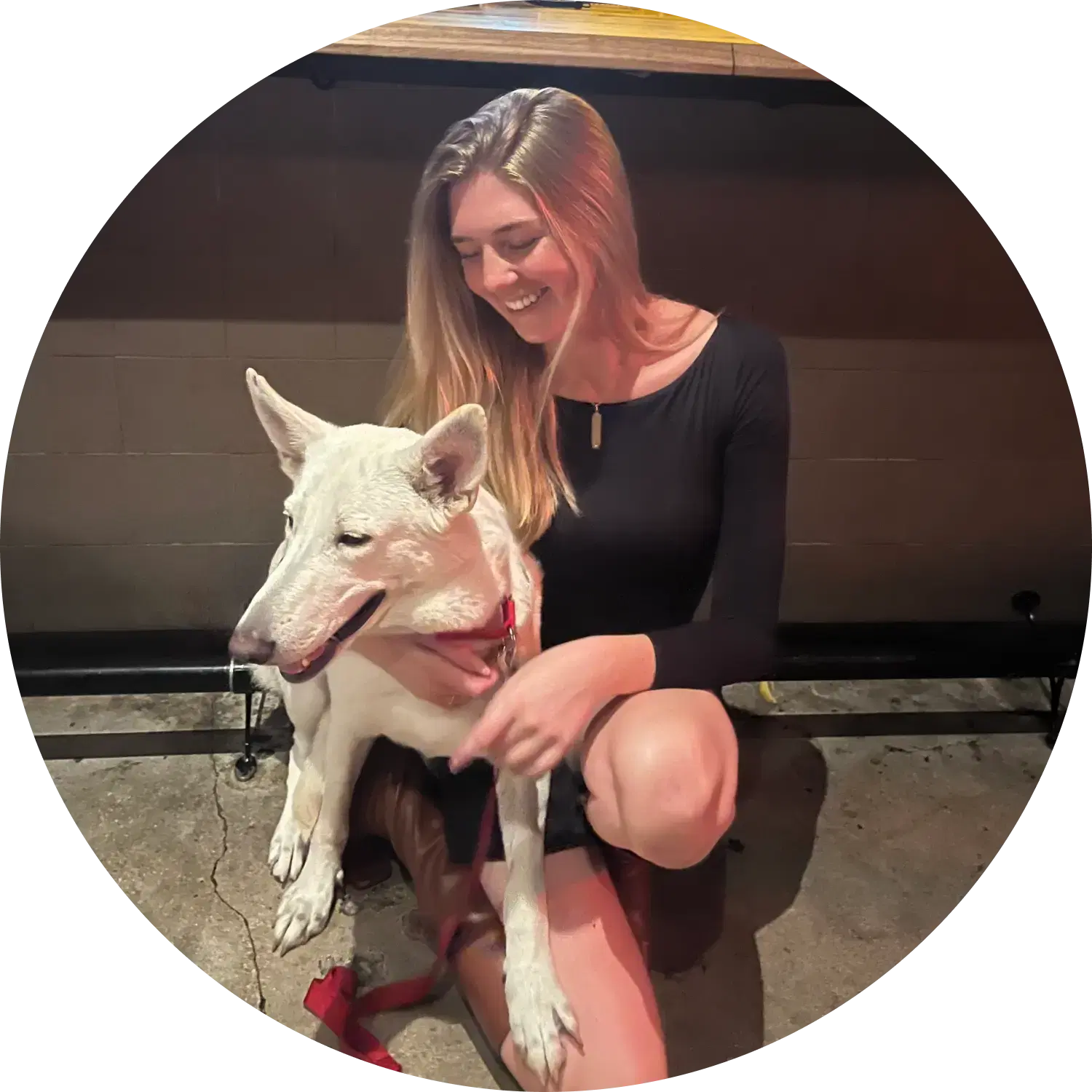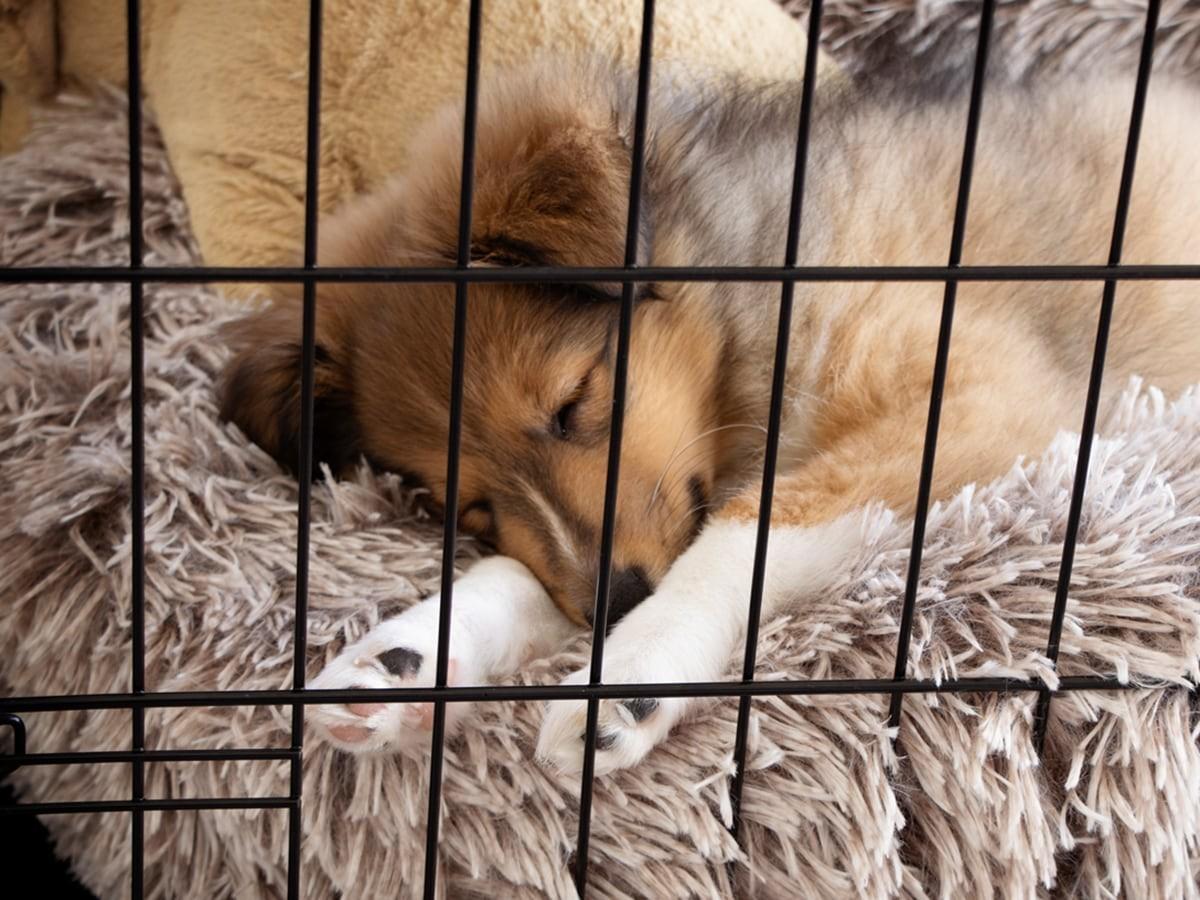Should I crate train my new pup? What are the benefits? My puppy doesn’t like being in their crate, how can I help them feel more comfortable? If you’re considering crate training, these are some questions you may have.
Crate training is recommended by vets and dog owners alike as it can help with house training, sleep schedules, and obedience. As an owner of a young pup, crate training can be an invaluable approach to creating a solid routine with your dog and giving yourself freedom.
Your dog’s crate is a place for them to have a space of their own to relax and recharge. After all, dogs instinctively gravitate to cozy dens where they feel safe, comfortable, and can wind down. Choosing an appropriately sized crate for your pup is crucial as too little or too much room can be an issue. It is also good to place a bed or blankets in the bottom of the crate to make it as comfortable as possible. Your pup will spend a lot of time there in their early months!
Benefits of crate training
Crate training can be simple and effective for teaching your puppy many valuable lessons. Establishing a consistent relationship between your pup and their crate from the beginning will make it their personal space to rest and calm their anxiety as they grow up.
Enforcing crate time for your pup has many benefits not only for them but also for you. Let’s talk about why crate training can make you and your pup happier!
House Training – Trying to potty train a puppy can cost you sleep, rugs, and carpets. It is good to start establishing rules about where your pup should relieve themselves as soon as possible. Even puppies rarely have accidents in their crate as dogs do not like to go to the bathroom in their “dens.” Because of this, time in the crate will strengthen their bowel muscles and bladder as they will wait until they are let out to go to the bathroom. It will also teach them the appropriate time to go to the bathroom. In no time, you will be on your way to having a house-trained canine! With that said, puppies need to use the bathroom more than mature dogs. It is essential to listen to your pup and give them regular bathroom breaks, so they are not in any discomfort.
A Space Just for Them – Just as you might like to unwind in your room, your puppy will enjoy the same. Putting your puppy in a crate isn’t trapping them but instead giving them a personal space to feel safe and relaxed. Dogs suffer from stress and exhaustion just like us. A crate can be helpful for your pup to feel secure and relieve anxiety. Your puppy will appreciate the privacy and having time to themselves.
For When You Leave the House – Leaving a new puppy at home can be nerve-wracking as they shouldn’t be left unsupervised for long periods. The crate will give you the freedom to go out and know your puppy is safe in their bed, and it reduces the risk of accidents or mess. Giving you peace of mind that your pup is not up to no good – and relieving separation anxiety for them as they grow increasingly comfortable in their crate.
Travel and Emergencies – The crate is a great everyday tool, but it also comes in handy if you need to travel with your puppy or secure them in an emergency. Life is full of surprises; placing your pup in a crate quickly can be lifesaving, making transporting them simple. Whether you are hopping on a plane or needing your puppy secured away, it is crucial to have your dog trained to enter and stay in their crate.
How do I crate train?
Knowing the ways crate training can help your puppy – and you – might leave you wondering, “Where do I start?”
Let’s look at a few ways to get your pup to love their crate and how you can use it to your advantage.
Create Positive Associations with the Crate
It is not unusual for your puppy to initially be nervous about entering the crate. They may even cry, screech, or beg for you to let them out. They are pack animals and like the company of their beloved humans, so in the beginning, the crate can cause separation anxiety. If your puppy is crying whenever you put them in the crate at first, don’t worry! This is normal. New puppies are adjusting to many new routines, things, and rules. To help your puppy feel more comfortable, make the crate a place they associate with positive reinforcements. You can give them a treat every time they go in on their own or place a bone or peanut butter-filled toy inside so they get comfortable staying in there for an extended time. Putting them into their crate when they’re tired after playing will make them less restless and associate the space with rest
Establish a Schedule
Dogs are driven by and reliant on routine, so keeping a consistent schedule of when your pup is in or out of their crate can help them know when is rest time and when is playtime. If your dog goes to bed every night or takes a nap during the day around a specific time, they will begin to know that these times are for their crate. Letting your dog have a crate schedule they can rely on can relieve stress and make them less opposed to the idea of a crate break.
Start Small
Introducing the crate in small increments can improve your puppy’s attitude towards their crate. If you go out for five hours the first time you put them in there, they might never want to go back in once they are out! Letting your pup get accustomed to their new bedroom works best if you don’t do too much at once. Start with smaller periods and build your way up – your pup will slowly become less anxious by learning you always come back no matter how long they are in there.
Play Games
No matter what puppies are doing, they love to play. The crate is no exception! There are many ways to make the crate fun and stimulating. If your puppy associates the crate with fun, they will grow fond of spending time there. Try throwing their favorite toy in there and letting them fetch it and bring it back a few times or hide treats in the crevices of their bed and let them sniff them out. These things will mentally stimulate your pup and make the crate a place they enjoy!
Your pup’s safe space
Ultimately, if you follow these steps, your pup will grow to love its crate. Don’t get frustrated in the beginning if your puppy seems to dislike their crate – like anything new, they will need to adjust. It takes patience and effort to show your pup how the crate can be a stress-free zone!
Read More About Dog Obedience Training Costs Here

The resident animal enthusiast at Spot. I have a lifetime of pet parent experience. If it has fur, feathers, or scales, I’ve probably shared my home with it. I aim to be a reliable source, blending experience with a dedication to the well-being of pets.
Choosing The Right Crate Size | (myvetanimalhospital.com.au)
How To Crate Train Your Dog In Nine Easy Steps | (akc.org)
The Benefits of Crate Training | (paws.com)
*2024 and 2025 Spot Pet Insurance Services, LLC. claims data.












